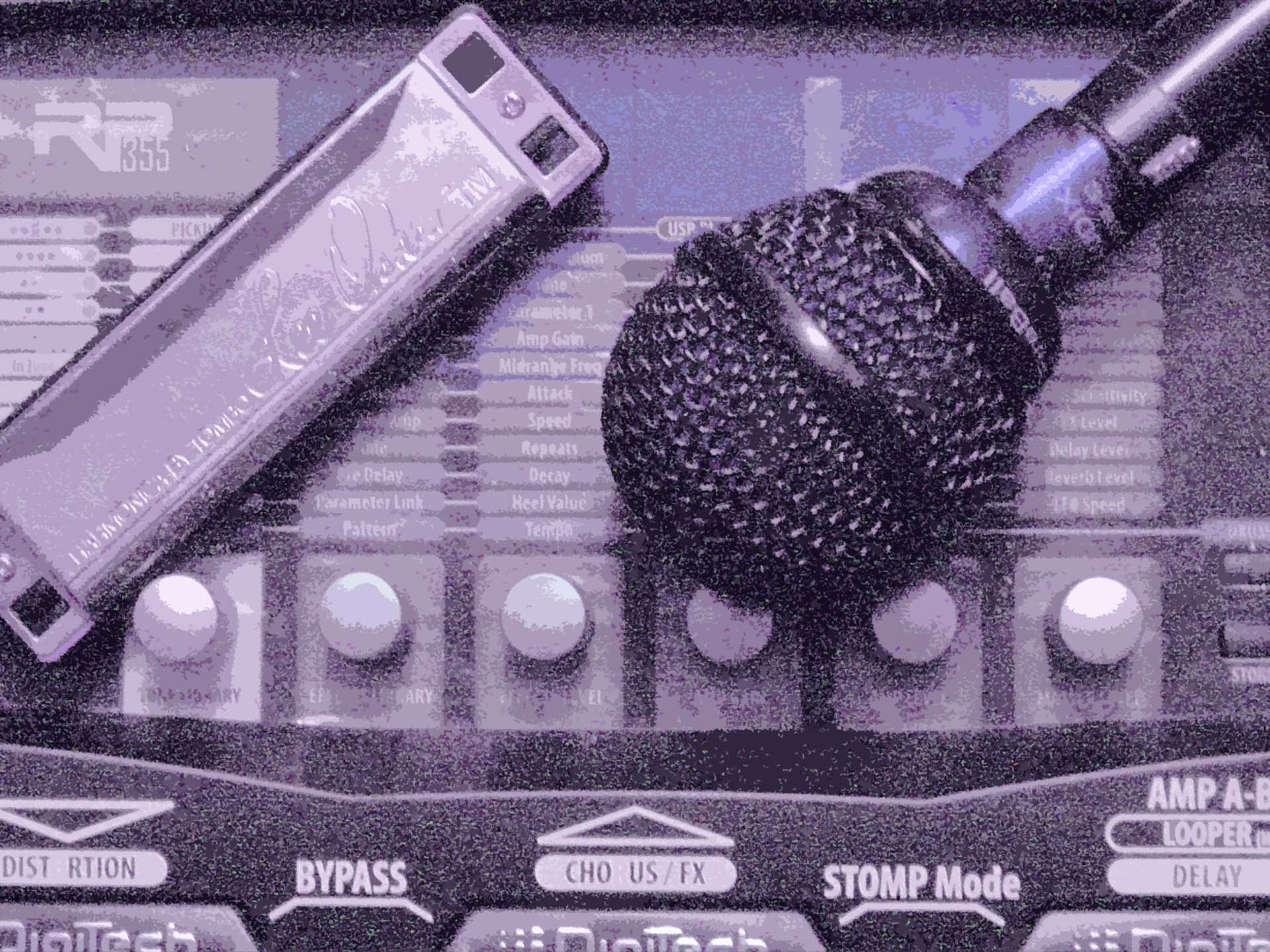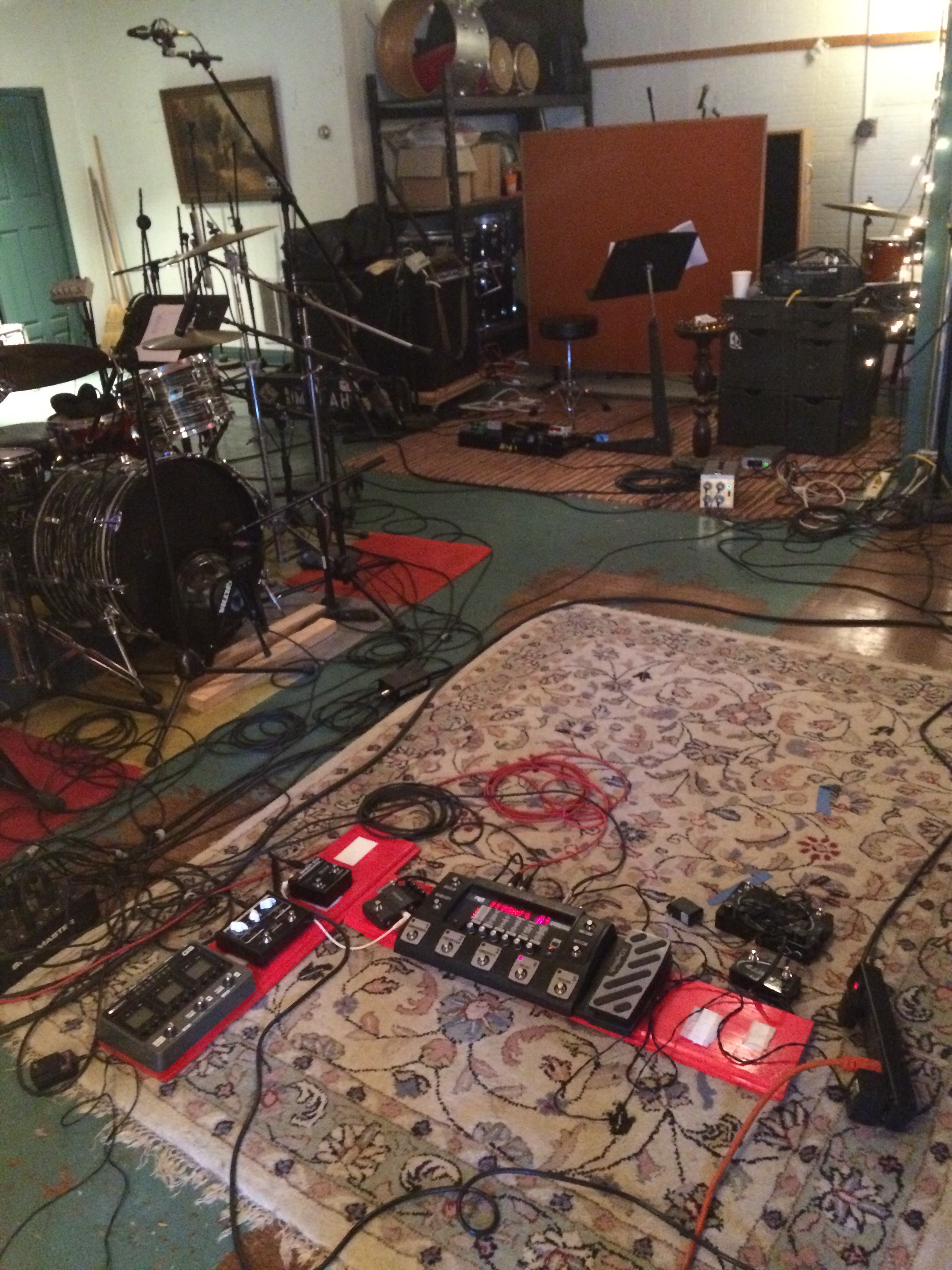
More Looper!
I’m preparing for the Virginia Harmonicafest, which I’m supposed to play in March, but may not unless a few more paying customers show up. (A post to the harp-l list tonight from the organizers said they’ve only sold eleven tickets so far, and they need to sell a lot more to pull this thing off.) Anyway, I’m working on new versions of a lot of pieces from my repertoire, using pre-recorded tracks I’ve created and a Digitech Jamman Solo looper. I just bought a footswitch so I can advance to different loops while performing, hands-free. I figure that I can store relatively complex arrangements as collections of short loops, and move between loops pretty smoothly with the footswitch. We’ll see how it works in practice. The less I can pre-record the better, because it’s more interesting for everybody to hear the parts played live. But I need to prerecord things like drums sometimes–I can’t just beatbox for 8 measures, let alone 32.
It’s important to have short loop segments, because if you don’t you can’t add multiple parts to the loop without forcing people to listen to a long section at least twice. It’s also important to think through the whole arrangement, including exactly which sounds I want to use in which places, alone or in combination. I’m trying to use a maximum of three harp layers–bass, mid range chords, and lead–for most pieces, though I might use another part to double the lead in some cases. (Makes it juicy in lots of ways.)
I just realized that I need to add a 3rd RP to my setup, because it’s the only way to get some of the fat sounds I’m hearing in my head without playing everything over and over.
I’m also working on adding different sounds to my solo pieces using the looper and/or the RP355. The solo pieces take on a new meaning when they go electronic. Stay tuned for samples.
Related Posts
Leave a Reply
You must be logged in to post a comment.
WHAT’S NEW
Categories
- Audio/Video
- Blog
- Blue Future
- Digitech RP Tricks and Tips
- Discography, CDs, Projects, Info, Notes
- Featured Video
- For the Beginner
- Gallery
- Hunter's Effects
- Hunter's Music
- Huntersounds for Fender Mustang
- Meet the Pros
- More Video
- MPH: Maw/Preston/Hunter
- My Three Big Contributions
- Player's Resources
- Pro Tips & Techniques
- Recommended Artists & Recordings
- Recommended Gear
- Recorded Performances
- Reviews, Interviews, Testimonials
- The Lucky One
- Uncategorized
- Upcoming Performances
- Zoom G3 Tips and Tricks

